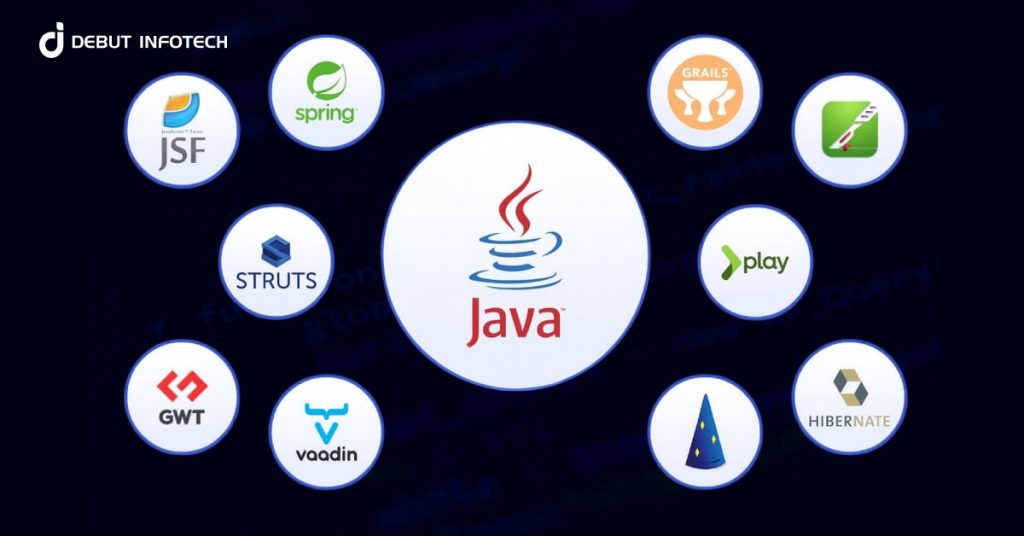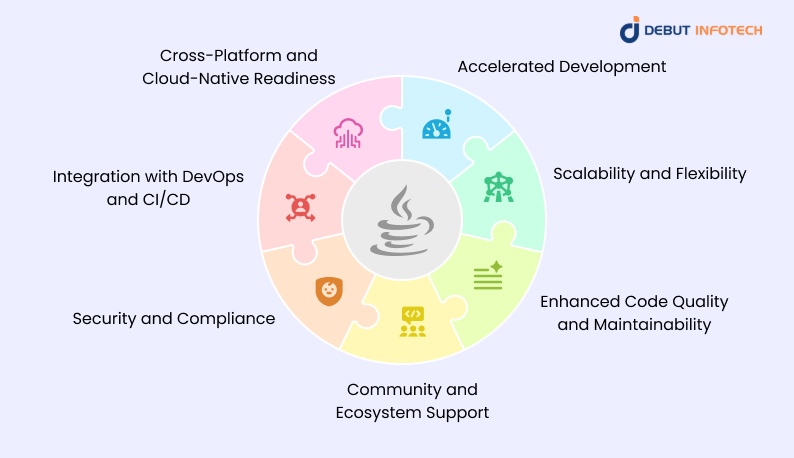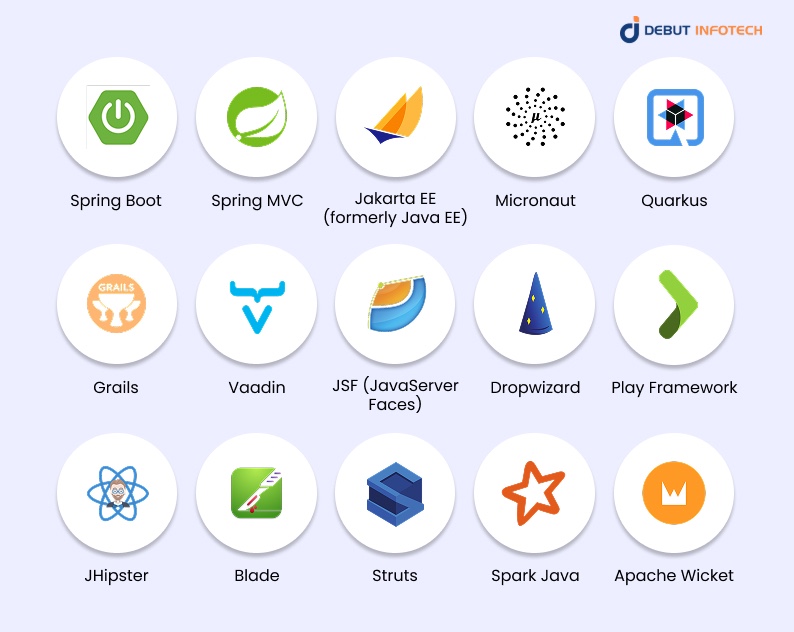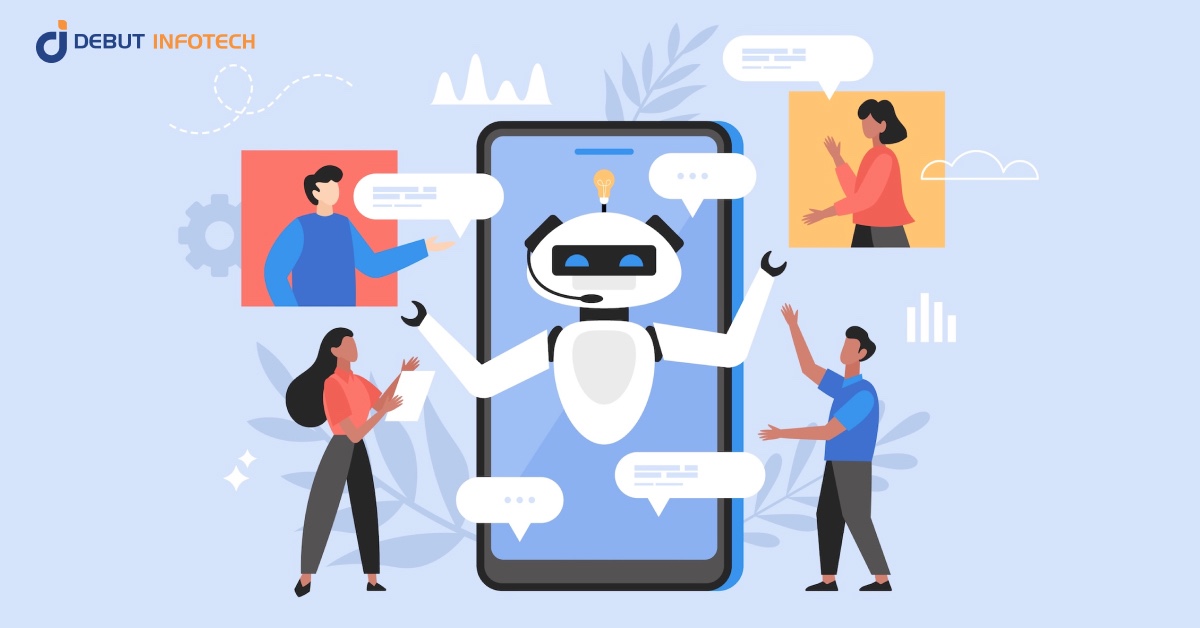
In today’s fast-paced digital landscape, Java continues to hold its place as one of the most powerful and widely used programming languages. Java frameworks offer pre-built code structures and tools that simplify the process of building scalable, secure, and high-performance web applications. As technology advances in 2025, the emphasis on speed, scalability, and seamless system integration makes these frameworks more essential than ever.
Whether working with a web development company or managing a custom software development project, choosing the right framework is critical to your success. This guide provides a comprehensive list of Java frameworks dominating the development space in 2025. From enterprise-grade backends to lightweight, modular tools for microservices, we’ll explore the features, use cases, and unique strengths of each. Additionally, we’ll touch on important concepts like the collection framework in Java, discuss web app vs mobile app decisions, and shed light on the latest tech stack for web development trends.
What’s the best Java framework for your next web app project?
Choosing the right Java framework can shape your product’s speed, performance, and scalability. Let experts guide you through the best options for your goals.
What is a Java Framework?
A Java framework is an assortment or a group of prewritten classes, interfaces, and tools that are provided to ease the development of Java applications in any situation. Acting within the framework set, application development, testing, and deployment require far fewer developer hours and its complexity is greatly reduced if starting from scratch. Common concerns in Java frameworks are usually database access, security, session management, or UI development, allowing an application-development team to concentrate instead on application logic and user experience.
Backbone-wise, they may be called blueprints serving as guides to developers regarding the best practices, architectural patterns, and reusable code components for their work. They provide final cut-edge solutions to common software development problems, such as web request handling, dependency injection, persistence, security, and so forth. Java frameworks build modularity, scalability, and maintainability in your codebase on top of whatever you build, be it a very simple web portal or a highly complex enterprise-grade system.
Frameworks like Spring Boot, Jakarta EE, and Micronaut offer varying levels of abstraction, customization, and control depending on the specific project needs. This makes them valuable across industries—whether for startups working on MVPs, large corporations developing internal systems, or custom software development firms delivering client-specific solutions.
Benefits of Using Java Frameworks

Using Java frameworks in your web app development process brings several clear advantages:
1. Accelerated Development: Frameworks provide ready-to-use components, tools, and libraries that drastically reduce the time it takes to build and deploy applications. Features like auto-configuration, scaffolding, and dependency injection minimize boilerplate code and simplify complex processes.
2. Scalability and Flexibility: Modern frameworks like Quarkus and Spring Boot are built to support microservices, allowing apps to scale effortlessly. Whether you’re building a lightweight REST API or a full-scale ecommerce platform, frameworks provide the flexibility to match your architecture goals.
3. Enhanced Code Quality and Maintainability: Most Java frameworks promote modular coding, separation of concerns, and adherence to design patterns like MVC (Model-View-Controller). This makes the codebase cleaner, more organized, and easier to maintain as the application grows.
4. Community and Ecosystem Support: Popular frameworks come with large developer communities, extensive documentation, and continuous updates. This ecosystem ensures ongoing support, rich plugin availability, and faster resolution of bugs or issues during development.
5. Security and Compliance: Frameworks often come with built-in security features such as authentication, authorization, and input validation. These features help developers enforce secure coding standards and reduce vulnerabilities from the start.
6. Integration with DevOps and CI/CD: Many Java frameworks offer seamless integration with CI/CD tools, DevOps pipelines, and cloud environments. This supports continuous testing, faster releases, and smoother deployment workflows.
7. Cross-Platform and Cloud-Native Readiness: With support for containerization, Kubernetes deployment, and serverless architectures, many Java frameworks are optimized for cloud-native development. This allows businesses to deploy applications across various platforms without significant rework.
Related Read: Top 15 Web Development Frameworks
List of Java Frameworks for Web Development in 2025

Java continues to power countless enterprise-grade and scalable web solutions. Whether you’re working on microservices, full-stack apps, or cloud-native deployments, the following Java frameworks dominate the scene in 2025, enabling faster, smarter, and more efficient development cycles.
1. Spring Boot
Spring Boot continues to dominate as the most widely adopted Java framework for enterprise web development. Built on top of the Spring Framework, it drastically reduces the time needed to create stand-alone, production-ready applications.
Key Features:
- Auto-configuration for seamless setup
- Embedded Tomcat, Jetty, or Undertow for easy deployment
- REST API creation through Spring MVC
- Robust support for microservices via Spring Cloud
- Built-in metrics, health checks, and externalized configuration
Best For: Enterprises that want scalable, secure, and production-ready web apps with rapid turnaround.
2. Spring MVC
Spring MVC offers the foundational building blocks for creating web applications using the Model-View-Controller design pattern. While Spring Boot builds upon this, many large-scale apps still prefer using Spring MVC directly for finer control.
Key Features:
- Flexible routing with annotation-based controllers
- Built-in form handling and validation
- RESTful service support
- Integration with view technologies like Thymeleaf and JSP
- Seamless exception handling
Best For: Developers who want full control over the request lifecycle and advanced configuration flexibility.
3. Jakarta EE (formerly Java EE)
Jakarta EE, managed by the Eclipse Foundation, is the successor of Java EE and provides a standardized ecosystem for enterprise web application development.
Key Features:
- Full-stack support including Servlets, JSP, CDI, JPA, and EJB
- Platform-independent deployment
- Simplified cloud integration through Jakarta RESTful Web Services
- Compatibility with modern app servers like Payara and WildFly
Best For: Enterprises looking for a standards-based, scalable Java framework for complex backend systems.
4. Micronaut
Micronaut is designed for building fast, modular microservices with low memory overhead. It avoids runtime reflection, making it ideal for serverless and IoT use cases.
Key Features:
- Compile-time dependency injection for ultra-fast startups
- Native image support via GraalVM
- Reactive programming and non-blocking HTTP clients
- Simplified testing and modularity
Best For: Developers targeting microservices, serverless, or IoT applications with limited resource environments.
5. Quarkus
Quarkus brings Java into the age of Kubernetes and cloud-native architecture. Optimized for GraalVM and HotSpot, it’s built with containerized environments in mind.
Key Features:
- Lightning-fast startup times and low memory usage
- Developer joy with live reload and Dev UI
- Unified configuration across environments
- Support for both imperative and reactive models
Best For: Developers building modern, cloud-native, or serverless Java applications on Kubernetes.
6. Grails
Built on Spring Boot and leveraging Groovy, Grails simplifies development with convention-over-configuration, making it great for fast prototyping and MVPs.
Key Features:
- Dynamic language support via Groovy
- Integrated ORM with GORM
- Scaffolding and code generation tools
- Plugin ecosystem for easy extension
Best For: Startups and teams building full-featured web applications quickly with minimal setup.
7. Vaadin
Vaadin stands out by allowing developers to build full-featured UIs in pure Java. It combines server-side logic with client-side web components for a seamless UX.
Key Features:
- Server-side rendering for enhanced security
- Drag-and-drop visual design tools
- Real-time collaboration support
- Custom components with Java and HTML templates
Best For: Teams needing enterprise-level UI/UX without heavy front-end JavaScript dependencies.
8. JSF (JavaServer Faces)
JSF provides a robust component-based approach to UI development. While less popular in recent years, it remains relevant in enterprise apps using Jakarta EE.
Key Features:
- Built-in templating and UI components
- Integration with managed beans and CDI
- Form handling with strong state management
- Extensible with custom components
Best For: Enterprise teams maintaining existing Jakarta EE systems or preferring component-driven design.
9. Dropwizard
Dropwizard combines Jetty, Jersey, Jackson, and other libraries into a lightweight framework focused on simplicity and performance for RESTful APIs.
Key Features:
- Out-of-the-box operational tools (metrics, logging, health checks)
- Embedded HTTP server
- Minimal configuration and easy deployment
- Secure defaults for production readiness
Best For: Teams developing REST APIs or backend services requiring minimal overhead.
10. Play Framework
Play is a reactive framework designed for modern web and mobile backends. Its non-blocking architecture makes it ideal for real-time and high-performance apps.
Key Features:
- Built-in support for Java and Scala
- Asynchronous and reactive I/O with Akka
- Hot reloading during development
- Modular routing and easy JSON handling
Best For: Developers building scalable, event-driven applications with high concurrency needs.
11. JHipster
JHipster acts as a development accelerator by generating full-stack apps using Spring Boot for the backend and Angular/React/Vue for the frontend.
Key Features:
- Code generators for monoliths or microservices
- Built-in CI/CD support and Docker integration
- Authentication, logging, and service discovery
- Frontend and backend scaffolding
Best For: Full-stack Java developers seeking rapid project scaffolding with integrated DevOps.
12. Blade
Blade is a minimalist framework built for RESTful APIs and lightweight web services. It uses Java 8 features and promotes clean, maintainable code.
Key Features:
- MVC-style architecture with lightweight routing
- Built-in JSON and template engine support
- Low learning curve and quick setup
- Session and cookie handling included
Best For: Small teams or solo developers building simple APIs or microservices fast.
13. Struts
Apache Struts is a legacy framework with strong MVC architecture and robust support for enterprise applications. Though older, it’s still used in stable environments.
Key Features:
- Easy integration with other Java libraries
- Action-based routing and form validation
- Secure, tag-based templating system
- Plugin support for extended capabilities
Best For: Enterprises managing legacy systems or requiring stable, long-term support.
14. Spark Java
Spark Java is a micro-framework ideal for building REST APIs or handling quick HTTP tasks. It’s simple, elegant, and developer-friendly.
Key Features:
- Minimalistic syntax with expressive routing
- Lightweight embedded Jetty server
- JSON and templating support
- Rapid prototyping and testing
Best For: Developers building lightweight REST services, proof of concepts, or internal tools.
15. Apache Wicket
Apache Wicket offers a component-oriented model where all logic and UI can be written in Java. It promotes code reusability and strong encapsulation.
Key Features:
- Stateful components for dynamic UIs
- Clean separation of concerns
- Strong internationalization and accessibility support
- No boilerplate XML configuration
Best For: Java developers focused on building secure, maintainable, and testable single-page applications (SPAs).
Comparing the Frameworks: A Quick Overview
With many Java frameworks available, here’s a quick comparison to help you choose the right one for your project.
| Framework | Ideal For | Key Features |
| Spring Boot | Enterprise web apps | REST APIs, microservices, security |
| Quarkus | Cloud-native apps | Fast startup, Kubernetes-ready |
| Micronaut | Microservices & serverless | GraalVM support, lightweight |
| Vaadin | UI-rich Java web apps | Drag-and-drop UI, server-side logic |
| Dropwizard | Lightweight REST APIs | Embedded server, rapid deployment |
| JHipster | Full-stack development | Angular/React/Vue + Spring Boot |
Key Trends in Java Web Development for 2025
2025 is seeing a shift in how developers approach Java web development. Trends include:
- Progressive web development: Developers are building hybrid experiences combining web and mobile features.
- Microservices and containerization: Frameworks like Quarkus and Micronaut are tailored for cloud-native environments.
- Rapid web application development tools: More teams are turning to tools that enable quick prototyping and deployment.
- Increased demand for remote teams: Organizations are opting to hire dedicated remote developers to scale operations globally.
Other Considerations for Java Web App Development
When selecting a framework, consider the following:
Web App vs Mobile App: Choosing between a web app vs mobile app depends on your target audience and platform reach. Java frameworks often allow for responsive designs that perform well across both.
Web Application Development Cost: The web application development cost varies depending on your choice of framework, team composition, and project scope. Using popular frameworks can help reduce time and development costs.
Ecommerce Website Development: For businesses focused on ecommerce website development, frameworks like Spring Boot, Vaadin, and Play provide the scalability and reliability necessary for high-traffic platforms.
Dedicated Software Development Team: Collaborating with a dedicated software development team can ensure consistent quality and timely delivery. Java frameworks are often chosen by such teams for their robustness and community support.
Also Read: Top 10 Java Development Companies in the world
Java Frameworks and Cloud-Native Development
As modern web applications demand greater scalability, agility, and reliability, cloud-native development has become a key priority for developers and businesses alike. Java frameworks are evolving to support this shift by offering out-of-the-box compatibility with cloud platforms and microservices architectures.
Frameworks like Spring Boot, Micronaut, and Quarkus are leading the charge in enabling developers to build lightweight, container-ready applications that are optimized for deployment in Kubernetes or serverless environments. These frameworks reduce startup times, memory usage, and boilerplate code—making them ideal for building and scaling mobile web app development in the cloud.
Additionally, cloud-native Java frameworks integrate well with CI/CD pipelines, observability tools, and configuration management systems, ensuring smooth deployments and enhanced performance monitoring. This trend aligns with the increasing adoption of DevOps and dedicated software development team models, where rapid deployment and scalability are essential.
For businesses focused on custom software development, choosing Java frameworks that support cloud-native principles can significantly lower infrastructure costs and improve time to market. As more web development companies seek to hire dedicated remote developers and adopt global delivery models, leveraging cloud-native Java frameworks will be crucial for ensuring performance, maintainability, and flexibility in web application delivery.
Need a dedicated team for enterprise-grade Java development?
Whether you’re scaling fast or starting fresh, hiring the right Java developers can make all the difference. Let’s build something powerful—together.
Conclusion
Choosing the right Java framework is essential for building robust, scalable, and future-proof web applications. In 2025, the Java ecosystem is thriving, offering diverse tools tailored to modern development needs—from microservices to rich UI-driven apps. Whether you’re optimizing an existing platform or building from the ground up, selecting from this curated list of Java frameworks will give your project the strong foundation it needs.
Debut Infotech is here to help enterprises and startups alike navigate the dynamic world of Java web development. With a team that understands the nuances of each framework and the business goals that drive technology choices, we deliver solutions that are efficient, innovative, and aligned with long-term growth.
Frequently Asked Questions
A Java framework is a pre-written code structure that simplifies and accelerates web application development. It offers libraries, tools, and best practices, allowing developers to build scalable and secure apps efficiently.
The collection framework in Java provides a set of classes and interfaces to manage groups of objects. It’s crucial in web development for handling data storage, retrieval, and manipulation, especially in complex backend logic.
The best Java framework in 2025 depends on your project’s requirements. Popular choices include Spring Boot for microservices, Jakarta EE for enterprise apps, and Micronaut for cloud-native development.
Consider factors like app complexity, scalability, team expertise, and web application development cost. Your stack should include the right Java framework, database, frontend tools, and cloud services.
Yes, Java frameworks can power the backend of mobile web apps. Frameworks like Spring and Dropwizard integrate easily with frontend technologies for responsive mobile experiences.
A web app runs in browsers and is built with responsive technologies. A mobile app is installed on devices and typically uses different programming environments. Java frameworks mostly support web apps but can power APIs for mobile apps.
You can cut costs by choosing frameworks that support rapid web application development tools, reusable components, and strong community support. Hiring a dedicated software development team or remote developers can also optimize expenses.


